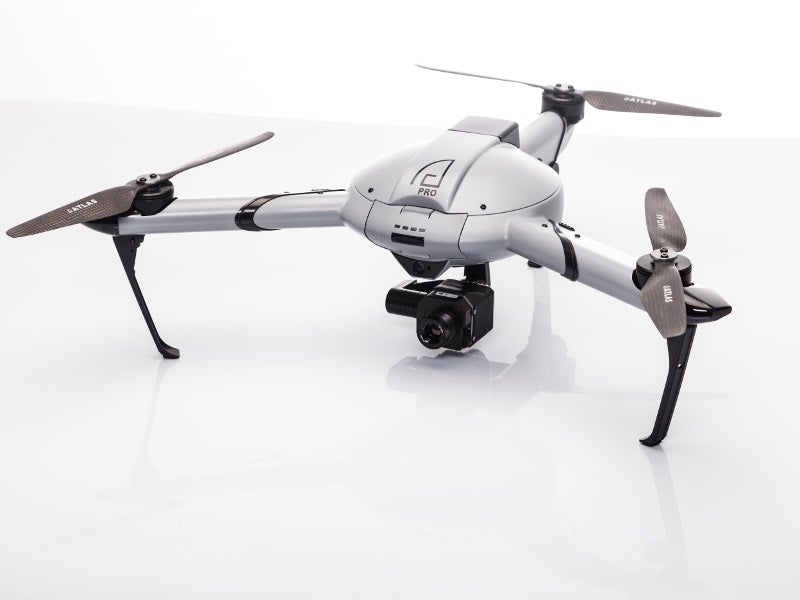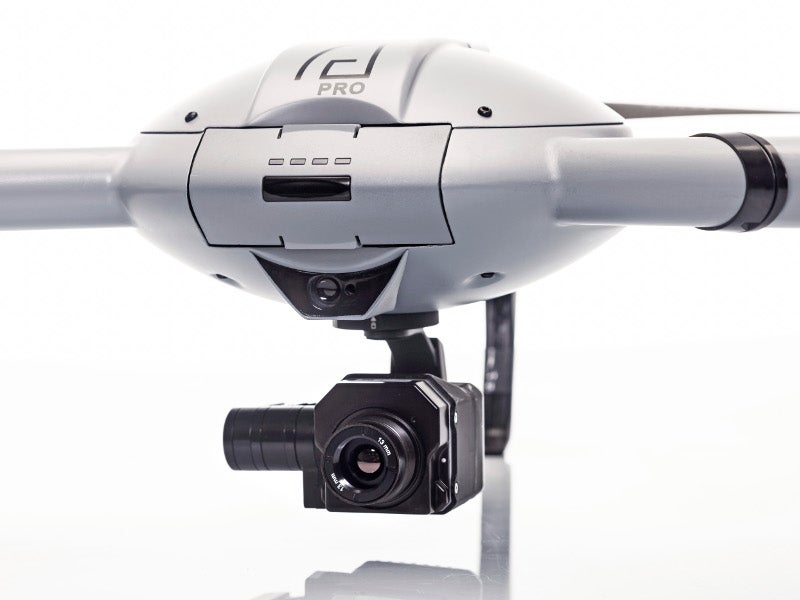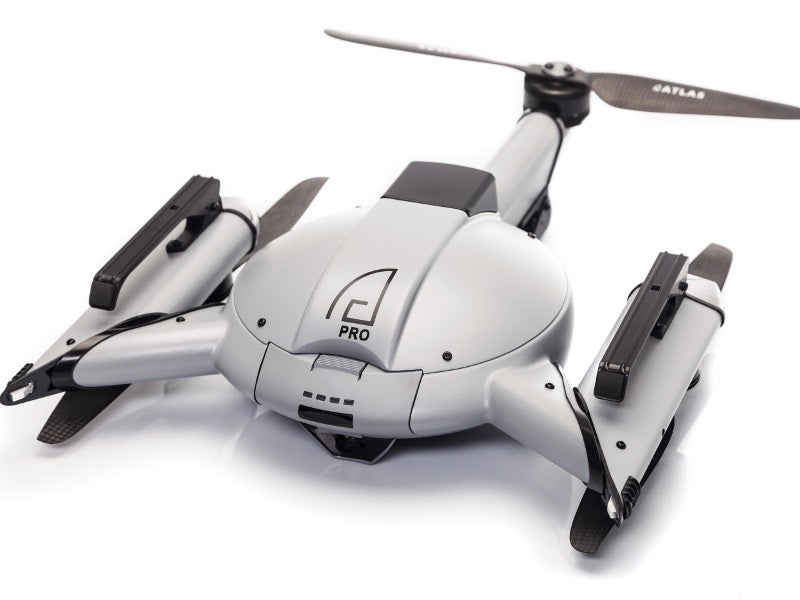AtlasPro is a small, multi-rotor unmanned aerial vehicle (UAV) offered by Atlas Dynamics for use in defence, security, oil and gas, inspection, and utility missions.
In August 2019, Atlas Dynamics received orders from unidentified military customers based in Europe and Israel for the delivery of its AtlasPro UAV systems.
The company introduced AtlasNEST, a state-of-the-art docking station for autonomous take-off, landing and battery swapping, as well as AtlasMESH multi-UAV communication system for use with AtlasPro UAV, in April 2019.
AtlasPro UAV design and features
AtlasPro is a small vertical-lift UAV with a circular-shaped carbon fibre fuselage integrating three rotor arms. Each rotor arm is fitted with a high-mounted single rotor and a rotor leg. The UAV has a diameter of 50cm and a maximum take-off weight of 1.7kg.
The lightweight drone fits into a waterproof hard case, which is carried in a water-repellent military-grade custom backpack. It also comes with accessories such as additional batteries, ground control station, and charger.
Payload
AtlasPro supports the integration of swappable HD payloads, which can be easily controlled and replaced for multiple missions. It can carry an Argus M10 optical day camera or VISOR NX optical radiometric camera. The payloads are mounted to the UAV through Atlas proprietary three-axis gimbal for image stability.
The Argus M10 camera offers optical zoom up to 10x and digital zoom up to 2x, while its ultra high-quality sensor ensures unmatched image capturing with a 1080p resolution, 60fps and 11Mbps speed. The camera supports first response, security, and inspection missions and can gather imagery for secondary tasks.
The VISOR NX high-sensitivity thermal camera aboard the UAV features second-generation digital detail enhancement (DDE). It comes with four different lens options to suit various mission requirements. The camera provides accurate temperature measurements for analytics and telemetry.
The Atlas operating system (AtlasOS) allows the UAV to deliver essential data with multiple layers of optics and artificial intelligence (AI) for computer vision, obstacle avoidance, and energy efficiency.
Ground control station
The easy-to-operate ground control station (GCS) enables the user to focus on the mission, while its simple user interface for autonomous navigation ensures the establishment of waypoint and point of interest (POI).
The AtlasMESH communication system further ensures the control of multiple UAVs from a single GCS. The operator can split the mission between different UAVs to optimise the execution of hot-swapping and relay tasks. The communication system can be controlled from Atlas GCS and third-party GCS.
AtlasOS enables the operators to employ various filters such as low-light, radiometric temperature isolation, and layers of AI for image recognition on the GCS.
AtlasPro battery details
Atlas Pro UAV is powered by either standard smart ion-pro or premium smart silicon-pro battery. The premium li-ion battery offers a maximum flight time of 50 minutes, while the standard battery provides an endurance of 45 minutes.
The operation of the battery-pack is controlled by a proprietary battery management system (BMS), which continuously monitors the battery status, battery level, and battery temperature. The BMS safety features further prevent overcharging and over-draining of the smart battery.
The smart li-ion battery is also equipped with safety features such as anti-explosion, anti-overcharge, and self-discharge to storage capacity. The Atlas App presents the life of the battery, while the remaining flight time is calculated based on the battery charge level.
Performance
The UAV can fly at a maximum altitude of 6,000m and can reach a maximum distance of 20km. It resists a maximum wind speed of 15m/sec. The operational temperature range of the drone is between -20ºC and 50º C.










